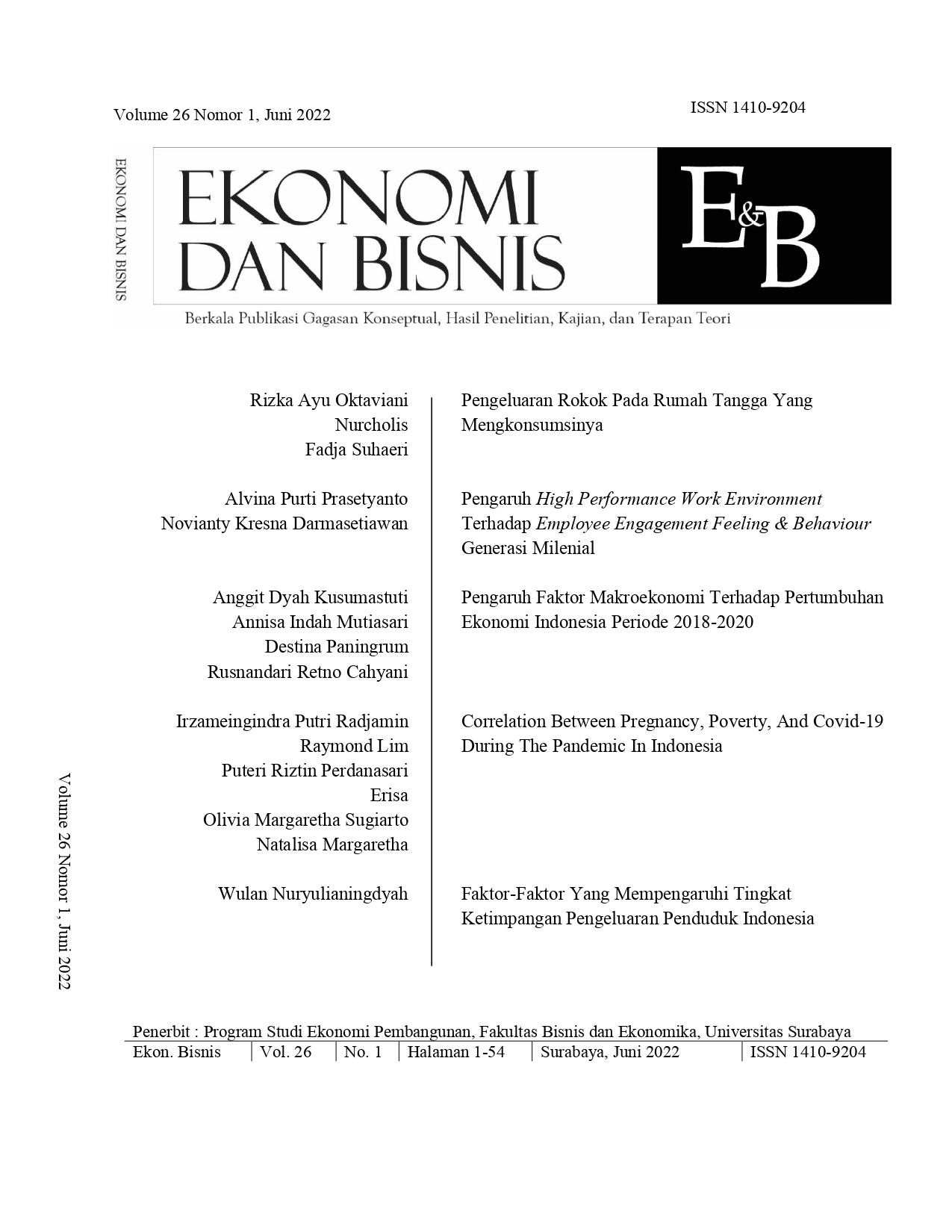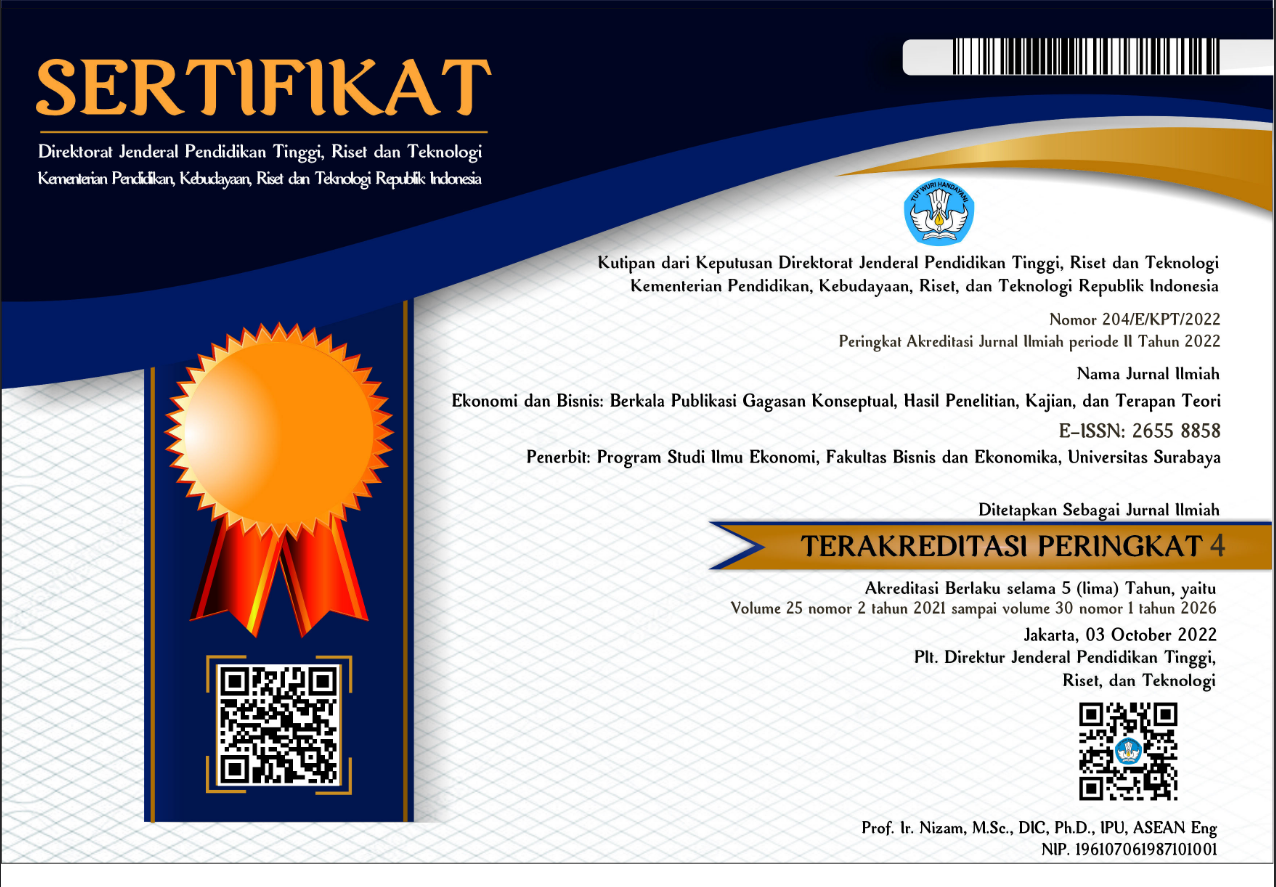PENGELUARAN ROKOK RUMAH PADA RUMAH TANGGA YANG MENGKONSUMSINYA
 Abstract Views:
656 times
Abstract Views:
656 times
 Oktaviani, Nurcholis, & Suhaeri (Bahasa Indonesia) Downloads:
890 times
Oktaviani, Nurcholis, & Suhaeri (Bahasa Indonesia) Downloads:
890 times
Abstract
The role of food commodities on the poverty line is much greater than the role of non-food commodities (housing, clothing, education, and health). Filter kretek cigarettes make the second-largest contribution to the poverty line. In addition, various scientific evidence state that smoking is a risk factor that causes morbidity and mortality from non-communicable diseases such as coronary heart disease, hypertension, stroke, respiratory disorders and cancer, impotence, pregnancy, and fetal disorders. Therefore, this study aims to determine the factors that influence the expenditure on cigarettes in households that consume them. The share of expenditure on cigarette consumption shows a different value in each quintile, so quantile regression is used in this study to see the influence of these factors at various quantile levels. The results of this study indicate that the education level of the head of household in the higher education category, the average per capita expenditure, the age of the head of the household, and the occupation sector of the head of the household have a significant effect on household spending on cigarette consumption at various quantile levels. Meanwhile, the variable that gives a bigger effect as cigarette consumption increases is the average per capita expenditure.
Downloads
References
Ahsan, A. (2004). Pengaruh Faktor Sosial Ekonomi Terhadap Perilaku Merokok Individu: Analisis Data Susenas 2004. Tesis Master. Universitas Indonesia. Depok. Indonesia
Badan Pusat Statistik Provinsi Jawa Timur. (2018). Statistik Pengeluaran untuk Konsumsi Rumah Tangga Provinsi Jawa Timur 2018. Badan Pusat Statistik Provinsi Jawa Timur. Surabaya.
Badan Pusat Statistik Provinsi Jawa Timur. (2019). Berita Resmi Statistik Kemiskinan di Jawa Timur September 2019. Surabaya.
Chen, C., & Wei, Y. (2005). Computational issues for quantile regression. Sankhyā: The Indian Journal of Statistics, 399-417.
Cintiani. (2017). Pemodelan Regresi Kuantil Tersensor (Studi Kasus Pengeluaran Rumah Tangga untuk Konsumsi Rokok). Tesis Master. Institut Teknologi Sepuluh Nopember. Surabaya. Indonesia.
Kementrian Kesehatan Republik Indonesia. (2017). Hidup Sehat Tanpa Rokok. Jakarta.
Kementrian Kesehatan Republik Indonesia. (2018). Riset Kesehatan Dasar (Riskesdas). Badan Penelitian dan Pengembangan Kesehatan. Jakarta.
Koenker, R. (2005). Quantile Regression, Econometric Society Monographs. Cambridge University Press. Volume 38. 349 pp
Nurhananda, D.A. (2018). Regresi Tobit Pada Data Tersensor (Studi Kasus Konsumsi Rokok Rumah Tangga Provinsi Daerah Istimewa Yogyakarta Tahun 2016). Skripsi. UIN Sunan Kalijaga. Yogyakarta, Indonesia.
Gaglianone, W. P., Lima, L. R., Linton, O., & Smith, D. R. (2011). Evaluating value-at-risk models via quantile regression. Journal of Business & Economic Statistics, 29(1), 150-160. https://doi.org/10.1198/jbes.2010.07318
World Bank, (1999). Curbing the Epidemic: Governments and the Economics of Tobacco Control. World Bank. Washington D.C., UK
World Health Organization, (2018). Lembar Fakta Tembakau Indonesia 2018. World Health Organization, Jenewa. Swiss.
Wulandari, W., Tedra, W. T., Rizki, I. M., & Prariesa, D. (2017). Konsumsi Rokok Masyarakat Kota Bandung Tahun 2015 dengan Model Hurdle Negatif Binomial (Hurdle-Nb). Jurnal Aplikasi Statistika & Komputasi Statistik, 9(2), 19-28.

 DOI:
DOI:















